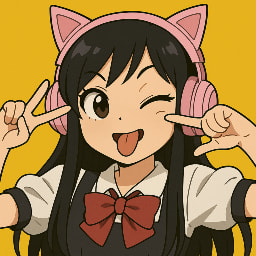
Shibuya-kei Meets Anime: 90s Pop Culture’s Sonic Bridge
Shibuya-kei, a style of music that emerged from the Shibuya district of Tokyo, was not just a genre, but a cultural movement
The convergence of Shibuya-kei music and anime in the 1990s stands as a significant chapter in Japan's rich cultural tapestry. Emerging during a time of profound socio-economic change, this cultural phenomenon encapsulated the vibrant energies of urban youth while grappling with the remnants of Japan’s post-bubble economy. The interplay of these art forms created a sonic and visual bridge that resonated across both local and international landscapes, leaving an indelible mark on the global pop culture of the time.
The 1980s and 1990s in Japan were characterized by an economic bubble, a period of rapid growth and consumerism, followed by a steep decline after the bubble burst in the early 1990s. As cities like Tokyo became increasingly urbanized, a youthful demographic began to seek new forms of expression through music and animation. Shibuya-kei, a style of music that emerged from the Shibuya district of Tokyo, was not just a genre, but a cultural movement. It blended elements of pop, rock, and electronic music, often infused with an ironic sensibility and a strong admiration for Western influences. Artists such as Pizzicato Five and Cornelius, who were pivotal in this movement, integrated diverse sounds ranging from bossa nova to funk, creating a uniquely eclectic sound.
Notable creators in this genre, such as Kenji Ozawa, helped define the Shibuya-kei aesthetic, using catchy melodies and distinct production techniques. Pizzicato Five's 1990 track “Sweet Soul Revue” and Cornelius's “If You're Here” exemplify the infectious beats and smooth vocals that characterized this sound. These artists not only shaped the musical landscape but also impacted visual culture, often collaborating with anime studios to create music videos or soundtracks that blended the two forms.
Anime of the era, such as “Neon Genesis Evangelion” and “Serial Experiments Lain,” also reflected the aesthetics and themes present in Shibuya-kei music. The emotional depth, complex narratives, and urban settings in these series resonated with the sentiments expressed in Shibuya-kei. For instance, the opening theme of “Neon Genesis Evangelion” features a haunting blend of orchestral and electronic music, mirroring the introspective yet expansive emotions captured in the show. Similarly, the visual styles of these anime—characterized by vibrant colors and abstract imagery—often reflected the playful yet nostalgic tones found in Shibuya-kei.
Moreover, the collaboration between these music and anime worlds facilitated a cross-media dialogue that was unprecedented at the time. The use of music within anime not only served as a backdrop but also enhanced character development and thematic exploration. The iconic soundtracks by composers such as Yoko Kanno in series like “Cowboy Bebop” not only resonated with the Shibuya-kei influences but helped to craft a holistic cultural experience, embodying a specific urban life that spoke to the youth.
While exploring this vibrant intersection, it is important to acknowledge potential problematic elements within the media of the time. Certain anime and music videos utilized tropes that may be viewed as sexist or overly provocative by modern standards. Instead of imposing contemporary moral judgments, it is crucial to contextualize these elements within the societal norms of Japan in the 1990s, where such artistic choices were reflective of a particular era's struggles with consumerism, identity, and youth culture.
The interrelation of Shibuya-kei and anime in the 1990s exemplifies a unique cultural synthesis that continues to influence artists and creators today. This sonic bridge not only captured the zeitgeist of an era marked by economic shifts and urbanization but also provided a canvas for expressing the nuanced emotions of a generation. The legacy of this cultural convergence endures, reminding us of the profound impact that music and visual media can have in shaping and reflecting the complexities of human experience. Through further exploration of these connections, we can deepen our understanding of Japan's cultural evolution and its lasting global influence.
Our Comics Newsletter
Join the newsletter to receive the latest updates in your inbox.



